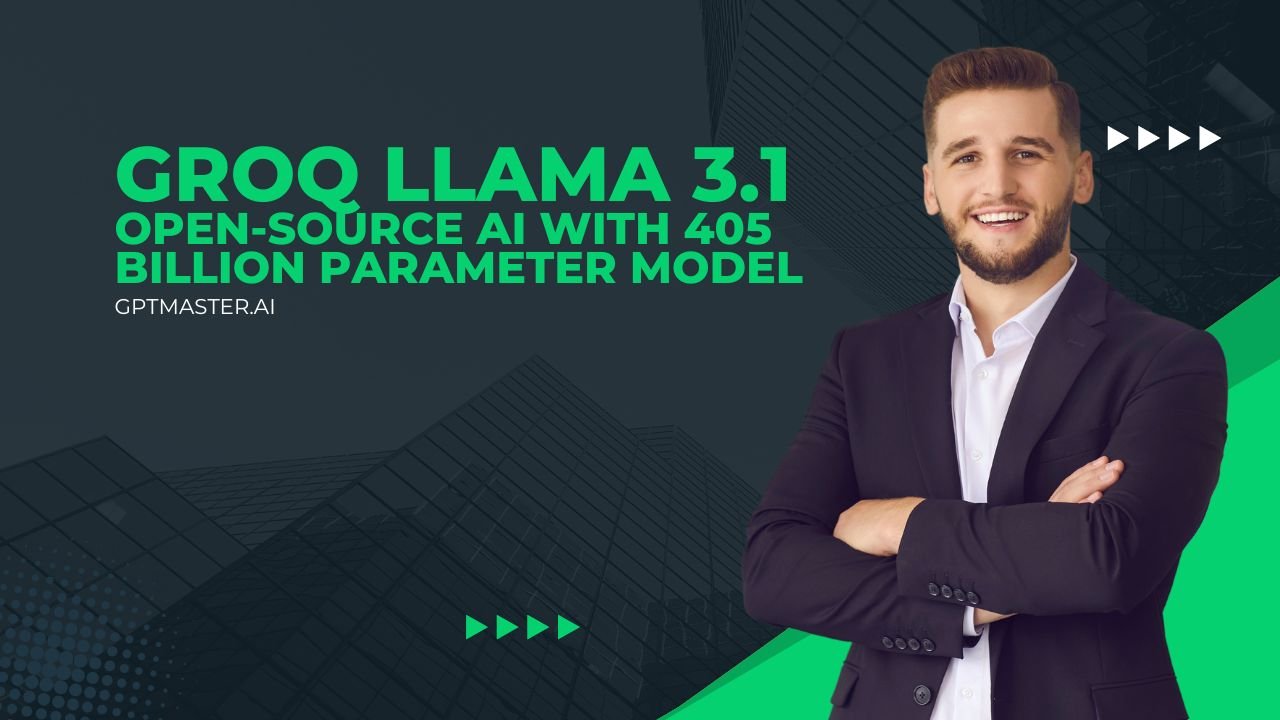Meta, the parent company of Facebook, has made a groundbreaking announcement in the world of artificial intelligence (AI) with the release of Llama 3.1, the latest iteration of its open-source large language model (LLM) series. This development marks a significant leap forward in democratizing access to advanced AI technologies.
Overview
Llama 3.1 introduces three new models, with the standout being the massive 405 billion parameter version. This makes it the largest openly available AI model to date, potentially rivaling or even surpassing many proprietary models in performance. The release also includes 70 billion and 8 billion parameter versions, catering to a range of computational needs and applications.
These models are being made available through Groq, a company specializing in high-speed AI processing. This partnership aims to make the power of Llama 3.1 accessible to developers and businesses worldwide.
Key Features
Llama 3.1 boasts several impressive capabilities that set it apart in the AI landscape:
- Extensive Context Length: The models can process up to 128,000 tokens of text at once. To put this in perspective, that’s roughly equivalent to a 100-page book. This allows the AI to understand and generate responses based on much larger chunks of information than most other models.
- Multilingual Support: Llama 3.1 can understand and generate text in eight different languages, making it a versatile tool for global applications.
- Advanced Tool Use: The model shows improved performance in areas such as general knowledge, controllability (the ability to guide the AI’s responses), mathematical computations, and translation between languages.
- Open-Source Availability: By making Llama 3.1 open-source, Meta is allowing researchers, developers, and businesses to freely access, study, and modify the model. This approach could accelerate innovation in AI technology.
Applications and Accessibility
The potential applications for Llama 3.1 span a wide range of industries. In healthcare, it could assist with patient coordination and care management. E-commerce businesses might use it for dynamic pricing strategies and market analysis. Industrial sectors could benefit from its ability to predict maintenance needs based on real-time data from sensors. Customer service departments could employ the model to provide rapid and accurate responses to inquiries.
Access to Llama 3.1 is being provided through several platforms:
- GroqCloud: This platform offers access to all three versions of Llama 3.1, with a focus on high-speed processing.
- Meta AI and WhatsApp: Users in the United States can interact with the model through these familiar interfaces.
- HuggingChat: This platform makes the 405 billion parameter model available globally.
- Vercel AI SDK: Developers can integrate Llama 3.1 into popular web development frameworks like React and Next.js.
For developers looking to build applications with Llama 3.1, Groq offers a Dev Console and GroqChat. These tools provide a user-friendly interface for interacting with the models and developing AI-powered applications.
Impact on the AI Landscape
The release of Llama 3.1, particularly the 405 billion parameter model, represents a significant milestone in open-source AI development. By making such a powerful model freely available, Meta is challenging the dominance of proprietary AI systems and potentially accelerating the pace of innovation in the field.
This move could lead to a more diverse and competitive AI ecosystem, where smaller companies and individual researchers have access to state-of-the-art technology. It may also prompt other tech giants to consider more open approaches to AI development.
However, the release of such powerful AI models also raises important questions about responsible use and potential misuse. As these technologies become more accessible, there will likely be increased focus on developing ethical guidelines and safeguards for AI deployment.
In conclusion, Meta’s Llama 3.1 represents a major leap forward in the democratization of AI technology. Its impressive capabilities, combined with its open-source nature, have the potential to spark a new wave of innovation across various industries. As researchers and developers begin to explore the full potential of this model, we can expect to see exciting new applications and advancements in the field of artificial intelligence.

